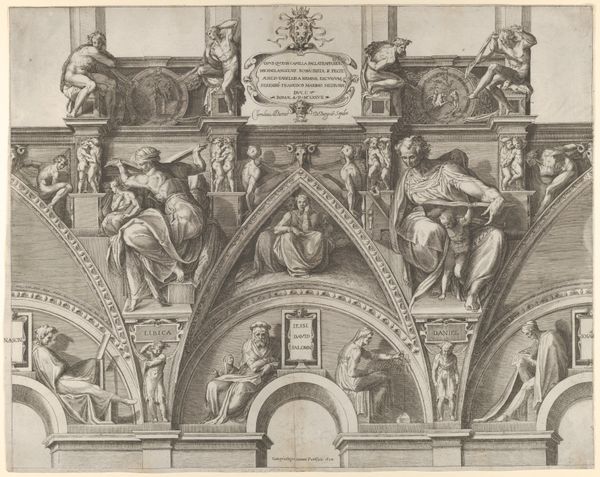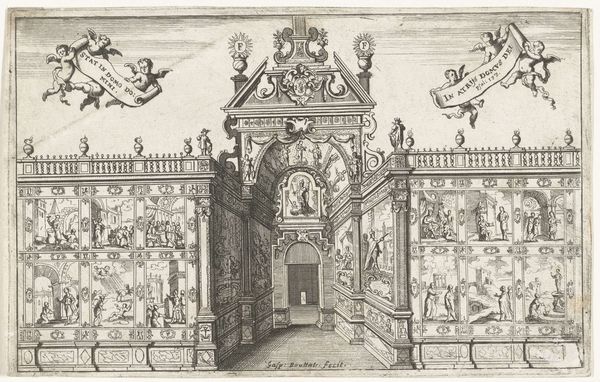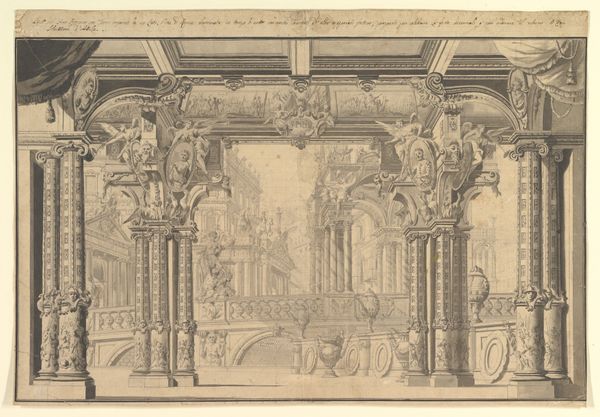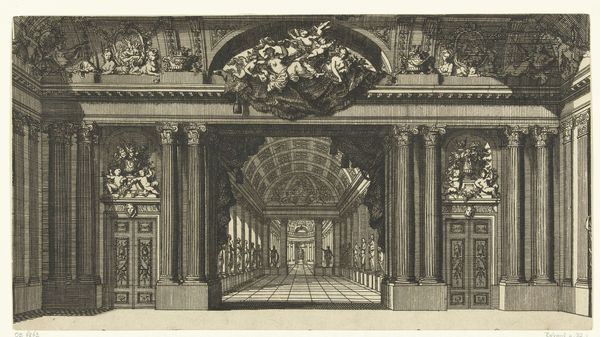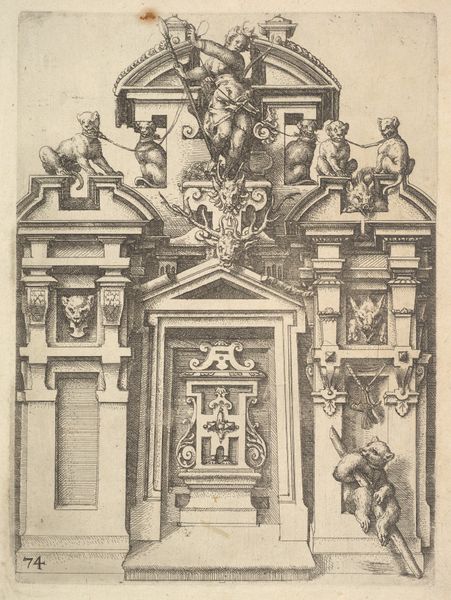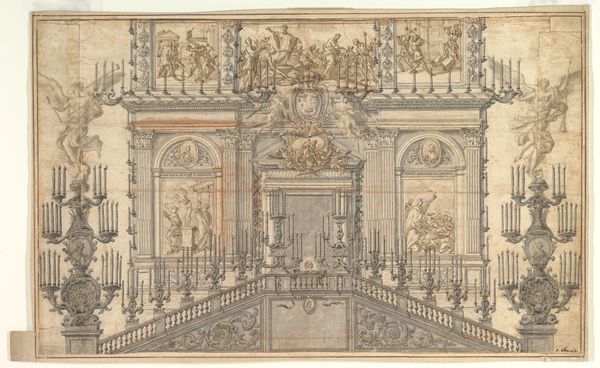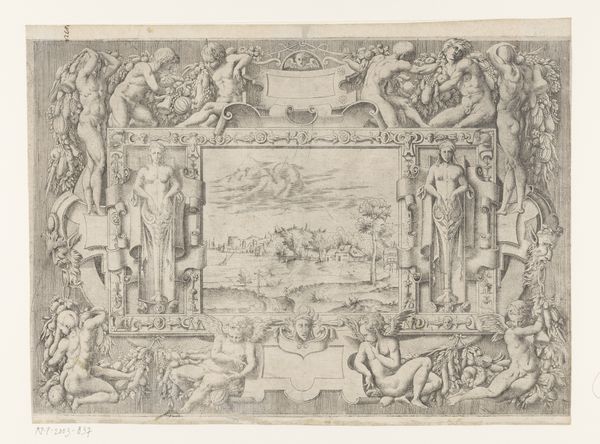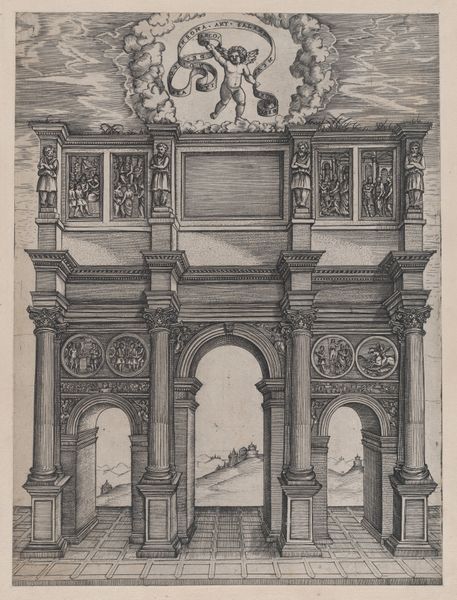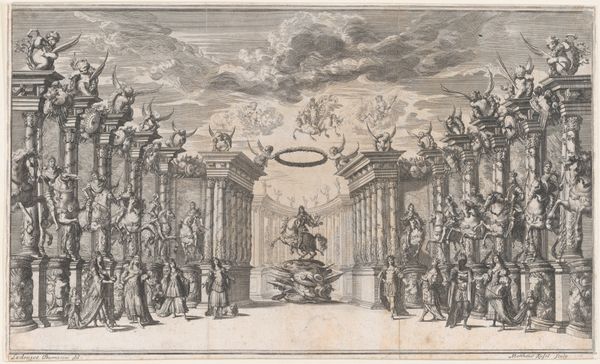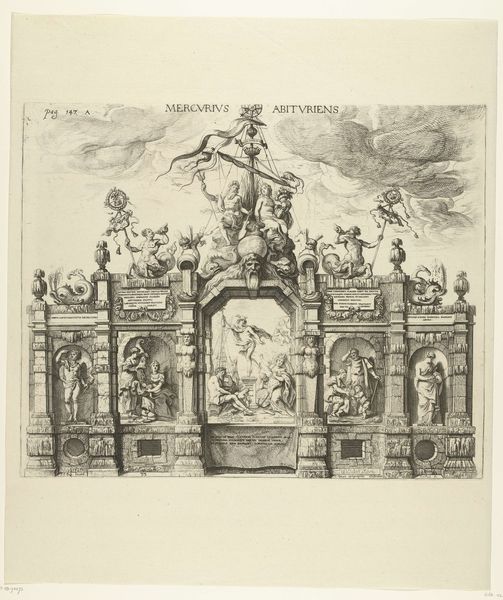
Loose plate from "La Voye de Laict ou le Chemin des Heros à l'entrée de Louis XIV en la Cité d'Avignon le 16 Novembre 1622" 1623
0:00
0:00
drawing, print, engraving
#
drawing
#
baroque
# print
#
engraving
Dimensions: Sheet (Trimmed): 9 7/16 × 12 5/16 in. (23.9 × 31.3 cm)
Copyright: Public Domain
Curator: This intricate engraving by Thomas de Berton from 1623, residing here at the Met, depicts a temporary triumphal arch erected for Louis XIV’s entry into Avignon. It's actually a loose plate from a larger series entitled "La Voye de Laict ou le Chemin des Heros." Editor: Wow, the level of detail is astounding. It’s incredibly ornate; a real feast for the eyes, if a little overwhelming. There’s almost too much to take in at once. Curator: That's characteristic of Baroque art, especially in celebrations of power. These temporary structures were designed to impress, demonstrating wealth and authority through sheer visual excess. It projects the glory of the monarch, while simultaneously solidifying public obedience. Editor: It’s interesting how these historical moments were manufactured, stage-managed. I can't help but consider who this display was really for – was it for Louis, the people of Avignon, or maybe the future chroniclers? And to what extent does propaganda and self-image blend in this representation? Curator: Indeed! The prints like this disseminated the image further, standardizing royal iconography. Looking closer, notice the allegorical figures, military vignettes, and lavish sculptural ornamentation. Each element plays a part in the visual rhetoric of kingship. It really highlights the theatre of absolutism. Editor: Exactly. It feels less like commemoration and more like an exercise in branding, solidifying not only Louis XIV's power, but the very concept of monarchy. How much of the common citizen is invested in all of that display of excess? The drawing makes me ponder the relationship between rulers, spectacle, and social control, especially in eras that suppressed marginalized voices. Curator: It makes us rethink historical reception and legacy. Understanding Berton’s print within its social context provides critical insight into the dynamics of power and representation in the early modern era. The artwork functions both as a mirror and a lens through which to see these societal complexities. Editor: A lens distorting certain perspectives and magnifying others! As overwhelming as its spectacle seems, examining these prints forces us to consider what realities remain unseen, who dictates historical memory, and why these symbolic systems persist. Curator: It shows us how images are constructed to shape and guide our understanding of events and influence lasting impressions of power, which echoes to today. Editor: And perhaps motivates us to question the narratives constructed around power, seeking to see beyond the gilded veneer.
Comments
No comments
Be the first to comment and join the conversation on the ultimate creative platform.
